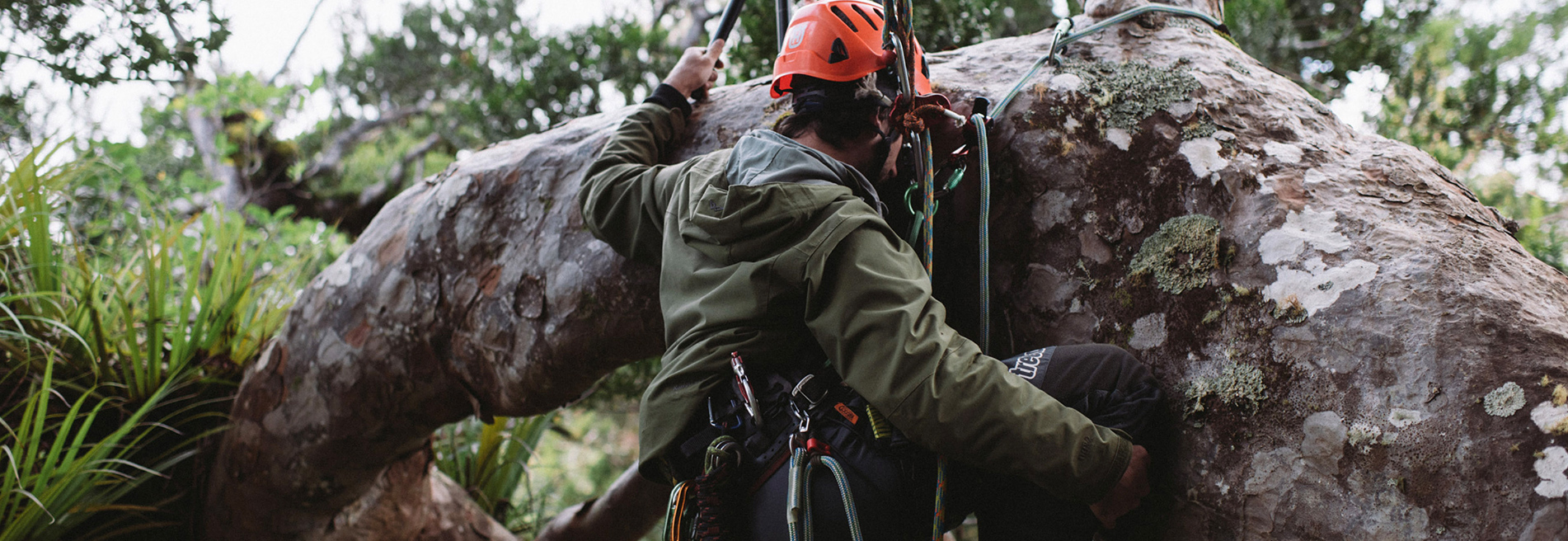AUT Artist in Residence Joseph Michael is collaborating with scientists to bring life-sized versions of New Zealand and Amazonian forest natives, including Tāne Mahuta, to town.
Famous for projecting a 360-degree Antarctic iceberg onto New York’s United Nations headquarters, Joseph’s latest fascination has seen him spending quality time with New Zealand’s largest living kauri tree in Northland’s Waipoua Forest.
The parallel tree-mapping projects are collecting data to create an augmented reality immersive art installation for New Zealand and Brazil. Although closed borders in 2020 put the 16,000 species in South America’s forest out of Joseph’s physical reach, a production team of scientists and ‘fixers’ on the ground there continued scanning and relaying data to him.
Like his ongoing Antarctica project (he still has plans to project it on the Arc de Triomphe and Sydney Opera House), Joseph’s latest installation aims to deliver the environment in its awesome scale into an urban setting, creating an experience that will inspire small changes in attitude.
“There’s a really nice relationship between art and science. When I’m looking at the tree from an artists’ lens, we’ll have totally different viewpoints, and when we share that, it makes us both think in different ways about what we’re doing.”

“It’s about bringing the environment closer without being too pervasive, getting people to go on a journey of understanding, to look at the natural world in a different way – interacting with it and respecting it, rather than dominating it.”
As well as an interactive experience, the work will become a tool for forest management and ecology decisions, and a digital archive of these significant cultural and historical heritage sites. Working alongside AUT Associate Professor Barbara Bollard and her team (who are studying the trees from a scientific perspective), Joseph has also been seeking advice from Te Roroa Iwi to understand the networks of the forest.
“There’s a difference in the way indigenous cultures view the environment – there’s no objectivation of the forest, trees are connected to you, the forest is central to your health.” Joseph is interpreting and simplifying the massive amount of information collected via drone footage, game-changing technology helping him demonstrate many of the amazing processes that go on in a tree.
He’s a perfect resident for AUT’s Colab, with its many alliances between academic faculties and practices. All the strands of his training and experience have led to this project – and collaboration is a driving method. Joseph, who says he was always destined for fine arts school (which he backed up with film training, then work on Avatar and The Hobbit), enjoys working with scientists.
“I have admiration for them – they’re amazing, they spend their whole lives working on specific areas and go into so much detail.
“There’s a really nice relationship between art and science. When I’m looking at the tree from an artists’ lens, we’ll have totally different viewpoints, and when we share that, it makes us both think in different ways about what we’re doing.”
As part of his residency, Joseph has been teaching across the Bachelor of Creative Technologies programme, where students have the opportunity to explore concepts related to storytelling or experiences conveyed across multiple platforms and formats using contemporary and emerging digital technologies.

